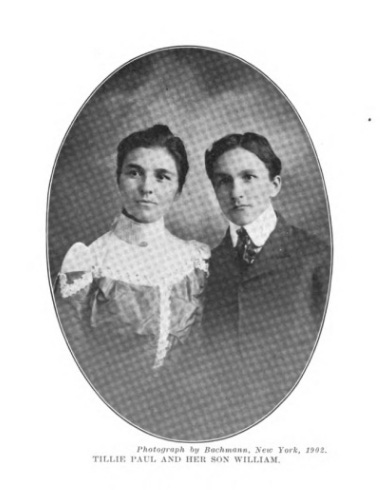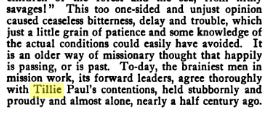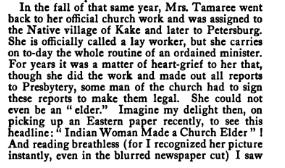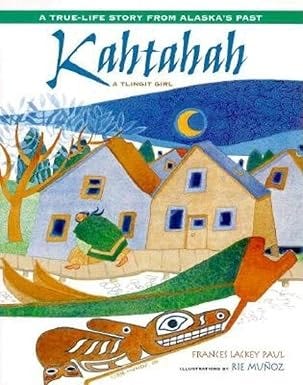FireFall Vol. 21: Alaska, Madagascar, and Argentina - Women Preaching in the 19th & 20th Centuries
Portrait of a Noble Malagasy Woman Preacher; Tlingit Presbyterian Elder Rev. Tillie Khaalyát’ Paul Tamaree; and Rev. Dr. Lucía Carmen Garcia de Costa, Nazarene Argentinian Church Planter
Hello! Welcome to FireFall.
It’s great to be back after a short break. There are so many incredible women preachers we could highlight. Today, I want to celebrate an unnamed woman preacher who lived in Madagascar in the 1800s; an indigenous Tlingit woman who was ordained a Presbyterian elder in 1931; and an Argentinian woman who became a licensed Nazarene preacher in 1924, before also being ordained in 1931.
Today’s post includes one of my very favorite archival photos of a woman preacher that I’ve stumbled across.
After the beautiful hall of faith in Hebrews 11, there’s a pivot to the “therefore” of Hebrews 12:
“Therefore, since we are surrounded by such a great cloud of witnesses, let us throw off everything that hinders and the sin that so easily entangles. And let us run with perseverance the race marked out for us, fixing our eyes on Jesus, the pioneer and perfecter of faith. For the joy set before him he endured the cross, scorning its shame, and sat down at the right hand of the throne of God. Consider him who endured such opposition from sinners, so that you will not grow weary and lose heart.”
How do you picture the great cloud of witnesses?
I hope the women below join your Scripture-soaked imagination, that their testimonies encourage you as you run your race.
In my twenties, I used to go running sometimes, though jogging was a more apt description. I rarely enjoyed it, and lured myself to keep going by finding a visual point to fix on: just get to that bench. Once at the bench, I found a new one: just get to that lightpost.
Late one darkening spring evening I made the rounds on an outdoor track. But as I jogged toward the illuminated lightpost that stood at the bend in the track, I pictured people who were heroes of the faith to me, standing in the pool of light, cheering and urging me on. Every time I approached that lightpost, I pictured them there. And while I never listened much to Michael W. Smith and wouldn’t have known that this song starts with,
Wandering the road of desperate life
Aimlessly beneath the barren sky
Leave it to Me, I'll lead you home
bits of that song came floating through my thoughts as I jogged in the twilight, turning the bend toward the lightpost where I pictured heroes of the faith clapping and urging me on:
Hear Me calling, hear Me calling
You're lost and alone
Leave it to Me, I'll lead you home
Hear Me calling, hear Me calling
Just leave it to Me
I'll lead you home
The hall of faith in Hebrews - that great cloud of witnesses - by faith testified to God’s goodness. That cloud of witnesses has only grown. I believe in the communion of saints…Protestants say this, not just Catholics.
Friends, I don’t know if you feel like you’re dragging your body around a track, trying to find something to fix your attention on: just to that bench. Just to that lightpost.
The communion of saints testifies this: fix your attention, fix your eyes firmly on Jesus Christ.
Imagine the communion of saints cheering you on as you move from one small milestone to the next.
When you stand on a platform, when you step to the pulpit, when you drive down the street, when you enter a board room, when you walk to a graveside, the Holy Spirit is already there.
Picture the communion of saints, too; the great cloud of witnesses, like people pressing forward cheering at a marathon finish line.
You’ve never run this race alone. You’re not running it alone now.
Portrait of a Noble Malagasy Woman Preacher of Ambohimalaza (near Antananarivo) in 19th-Century Madagascar
As we’ve discussed before here, Madagascar is no stranger to women who preach; Nenilava lived in the 20th century. But a few decades before Nenilava was born, this photo was taken sometime around 1885-1895:
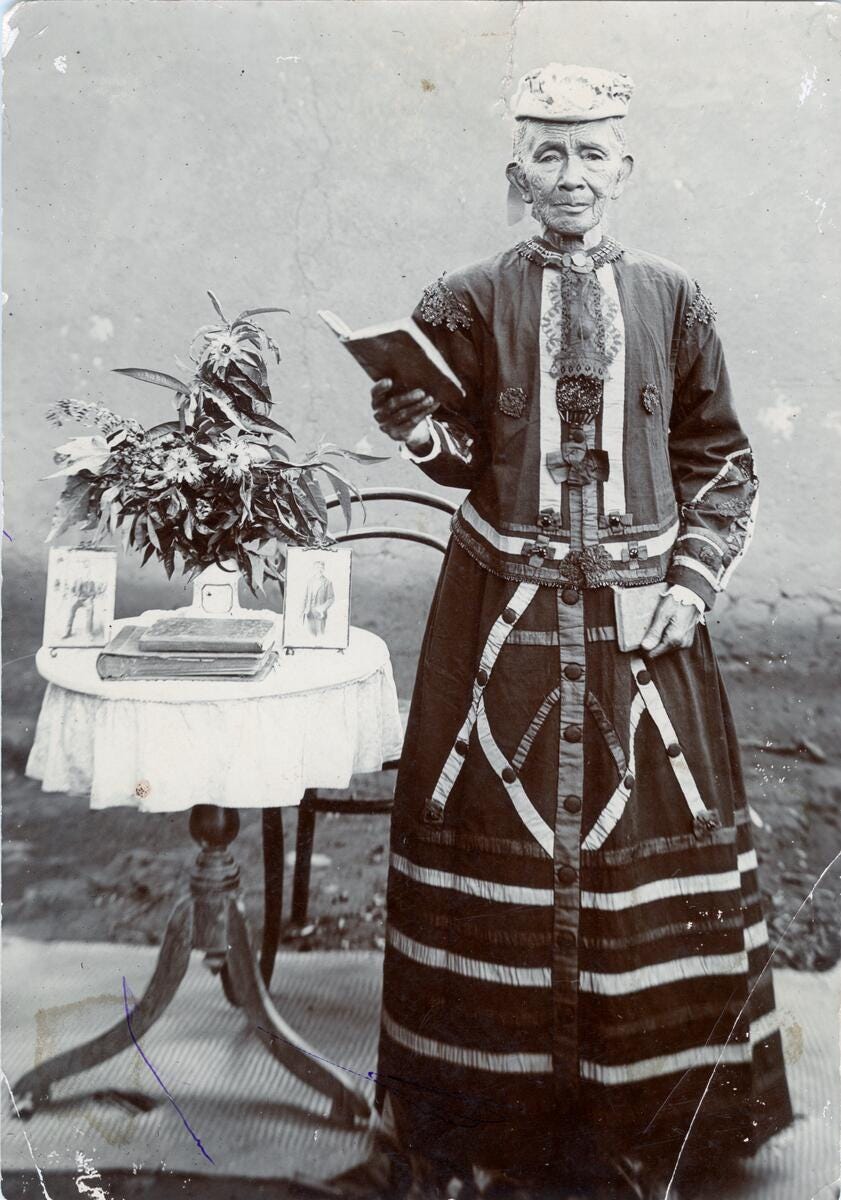
The description states: “Portrait of a noble Malagasy woman of Ambohimalaza (near Antananarivo); she changed religion to Christianity and became a zealous preacher. She was the hunt [sic] of Rakatonaoh and she died before the French conquest of 1895.” (Rakatonaoh may be a misspelling of the surname Rakotovao.)
She became a zealous preacher.
The University of Southern California’s digital library includes an “International Mission Photography Archive,” a helpful online repository of photos like this one, and which also includes photos recently shared here of women evangelists from India, along with discussion of who gets named in church history.
The estimated time of this photo places it during the reign of Ranavalona III, the “last queen of Madagascar,” a Protestant Christian whose aunt (queen before her) engaged a woman from the London Missionary Society as Ranavalona’s childhood tutor. The reign of Ranavalona III ended prematurely when she was sent into exile after French forces attacked and invaded Madagascar.
The royal palace was located in Antananarivo, giving some additional context to the location mentioned in the description of this noble Malagasy woman preacher.
Every time I see this photo, I feel pulled into it. I wish I could have heard this unnamed noble Malagasy “zealous preacher.”
Rev. Tillie Khaalyát’ Paul Tamaree of the Teeyhittaan Raven Clan, Tlingit Presbyterian Elder
“As her own people say of Tillie Paul, ‘she has the heart of a man, and no man can lie down or be a coward in her presence.’” – Mary Lee Davis, We Are Alaskans
Rev. “Tillie” Khaalyát’ Kinnon Paul Tamaree (ca.1863-1952) was the first Native American woman ordained an elder in the PCUSA and the first woman ordained an elder in the Presbyterian Alaska Northwest Synod. After decades of ministry, she was ordained in 1931 in Wrangell, Alaska.
Rev. Tillie Paul Tamaree was so immensely talented and active that there’s a kaleidoscopic quality when engaging resources about her: she’s celebrated in Presbyterian archives; she’s described in warm personal terms in We Are Alaskans, a book by (unusually anthropologically perceptive for her time) missionary Mary Lee Davis; she’s included on Alaska’s state website in relation to suffrage history; she’s named in an old legal file on the government’s case against her when she was arrested for civil disobedience; she’s featured in the book Between Indian and White Worlds: The Cultural Broker; and Wise Women: From Pocahontas to Sarah Winnemucca, Remarkable Stories of Native American Trailblazers; she’s discussed in a graduate thesis on “Tlingit Women and Presbyterian Missions”; she’s featured in a children’s book –
and you can even watch this video about her by her own great-granddaughter, Debra Dzijuksuk O'Gara: “Tillie Paul Tamaree, Educator and Tribal Historian.”
Born in the early 1860s, Kah-tah-ah “Tillie” Kinnon had a challenging childhood: her native Tlingit mother died young, but before passing away managed to place her daughters in the care of native relatives to prevent them being sent by their European father for education overseas. For a while after that, Tillie lived with a Methodist missionary family before returning to her relatives.
Around age 16 or 18, Tillie Kinnon started working as a preaching translator for a Presbyterian minister, Rev. Hall Young. These early experiences encapsulate her gifts, her personality, and her early calling. Sometimes when Rev. Hall Young preached on passages that Tillie Kinnon previously had countered would be difficult or nonsensical to the Tlingit context at that time, she simply chose to substitute her own content as part of her “translation.” Some of her first sermons would’ve been delivered in the presence of Rev. Hall Young, who thought he was the one preaching that Sunday.
Linguistic translation isn’t reducible to vocabulary; language carries culture, and Tillie was not only a translator in a basic sense, she was a Tlingit culture educator as well. Mary Lee Davis’ We Are Alaskans underscores the depth of Tillie’s brilliance throughout decades of her vocational work in bridging not only languages and cultures but also theological nuance, as she insisted on retaining the beautiful elements of Tlingit culture and refused to reduce Christianity to the missionaries’ own cultural backgrounds.
Lee Davis noted, “Tillie Paul had many a hot argument with her white friends upon this subject, and has herself consistently refused to teach her people to look down on their own past. This has been one of her best gifts to them.”
After Tillie Kinnon married Louis Paul in 1882, they were sent to establish a mission school in Klukwan. Their first child was born, and they were sent by the mission board to Tongass. Their second child was born, and later Rev. Hall Young wrote, “Tillie taught school, preached to the natives, and did the general work of pastor and teacher. Louie, having less education, provided wood for the family, fish and meat and other food and was Tillie’s assistant.” (See Alison Ruth Parry’s thesis Their Works Do Follow Them: Tlingit Women and Presbyterian Mission, quoting Rev. Hall-Young’s letter in the Sheldon Jackson collection.)
Parry further clarifies, “A letter written by Louis Paul [Tillie Paul’s son] makes it clear that the Presbyterian church administration recognized the influence of the female interpreters…Initially, the interpreter-teacher position was the only one open to Tlingit women in the Presbyterian church that provided them with the means to maintain social and political influence within their communities. In later years, Tlingit women assumed the position of deaconess, in which they were called on to advise in various matters and also to minister to the spiritual and physical needs of the congregation by visiting and caring for the sick and providing aid to the poor. In the absence of the minister at the Juneau church, the deaconess (reported to be a chief’s daughter) preached to the congregation…”
Tillie and Louis Paul had two children and she was expecting a third when Louis died tragically in 1886. After that, needing a way to support herself and her children, she left Tongass and taught at a school in Sitka, despite misgivings due to past violence between her tribe and the tribe at Sitka.
She remained on staff at the Sitka school for over ten years, overseeing initiatives, translating hymns into Tlingit, supporting the temperance movement, and working with her cousin to create a written alphabet and dictionary for the Tlinglit language. In 1902, Tillie Paul was invited to the Presbyterian General Assembly, where she gave an address (see Wise Women).
She was asked by the mission board to go smooth over a conflict in a church in Wrangell in 1903. Parry again notes, “the high esteem that Tlingit people held for this interpreter was also evident by her assumption of the important role of mediator in a number of conflicts arising between the church and the native congregation as well as between clans. For instance, one letter described her role in the resolution of a conflict in which all the Tlingit left the church: ‘She was sent here to Wrangell on account of schism which took all the natives from our church. She was personally responsible for bringing back practically all the natives for noone else had the power to explain the true facts concerning the trouble…and also had the influence…’” While settling the situation in Wrangell, she met and married William Tamaree.
In the early 1920’s, Tillie Paul Tamaree was arrested for civil disobedience – specifically, “inducing an Indian not entitled to vote to vote at an election.” Though most native people did not yet have citizenship, her native friend did - but was turned away when he tried to vote. She insisted he was in the right, and while she didn’t have citizenship and couldn’t vote, she went back to the polling station with him and stayed while he voted. Both were arrested. One of her sons by this time was grown and had become a lawyer; he defended his mother’s friend, and charges against Tillie Paul Tamaree were dropped, though both she and her friend were fined. Later in 1924, Congress finally voted to grant citizenship to Native Americans.
After Presbyterians opened ordination to women in 1930, Tillie Paul Tamaree was elected an elder, and in 1931 she was ordained in Wrangle, Alaska, an act confirming decades of pastoral leadership and ministry.
Interestingly, the state of Alaska suffrage webpage offers one of my favorite introductions of Rev. Tillie Paul Tamaree, though it doesn’t mention her ordination: “Matilda ‘Tillie’ Khaalyát’ Kinnon Paul Tamaree…was a Tlingit woman of the Teeyhittaan Raven clan of Wrangell, Alaska and a teacher, translator, tribal historian, and activist.”
Rev. Tillie Khaalyát’ Paul Tamaree of the Teeyhittaan Raven clan, Tlingit Presbyterian elder. She refused to be either Tlingit, of the Teeyhittaan Raven clan, or Presbyterian: she was inextricably and persistently both. In the context of the troubled history of missiology, her keen theological instincts and the way she modeled contextual theology illustrate the significance of her leadership.
In the mid-1990’s, Rev. Tillie Paul Tamaree’s daughter-in-law Frances Lackey Paul wrote a children’s book about her called Kahtahah.
For more on Rev. Tillie Paul Tamaree, you can also browse archives related to some of her children who became leaders and have their own related archives, like here.
This 1997 article from the Daily Sitka Sentinel details a display of baskets donated to the Sheldon Jackson museum by Rev. Tillie Paul Tamaree.
Mary Lee Davis noted at the end of We Are Alaskans that she includes more stories of Tillie Paul and others in her books Uncle Sam’s Attic and Alaska the Great Bear’s Cub.
Rev. Lucía Carmen Garcia de Costa: Nazarene Argentinian Church Planter, Preacher and Bible School Instructor
When enthusiastic Nazarenes arrived in Argentina in the early 20th century, a missionary couple rented space from a woman with several daughters. One of her daughters, a devout Catholic, became the first Nazarene convert in Argentina. Lucía Carmen Garcia (1903-1984) went on to partner with a friend, Soledad Quintana, and later with her husband, Natalio Costa, to plant numerous congregations. By the early 1970s, working with others, Rev. Dr. Lucía Carmen Garcia de Costa had planted roughly 1/3 of the congregations in her district.
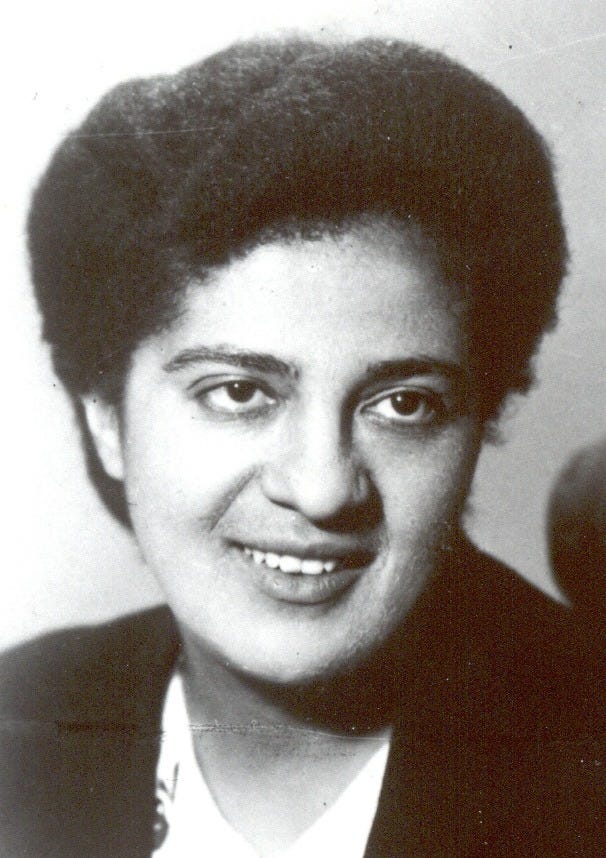
Before her 1931 ordination, Lucía Carmen Garcia became a licensed preacher in 1924. She traveled with Soledad Quintana, preaching and discipling around Buenos Aires. In 1927, she pastored the Buenos Aires-region Merlo/Moron/Moreno circuit. Later, congregations in Itulaingo and Castelar were added to the circuit as well.
In 1934, Rev. Lucía Carmen Garcia was hospitalized in Merlo and was so ill she thought she wouldn’t survive. While in the hospital gravely ill, a gentleman came asking to see her, to ask her to come preach in his town of Mariano Acosta.
(If someone visited me in the hospital while I was extremely ill to ask me to come preach somewhere, I’m not sure my face would convey politeness. I might gesture meaningfully to the IV.) Rev. Lucía Carmen Garcia was taken aback; gradually, she made a slow recovery. Once recovered, she also had the small matter at hand of planning to be married.
Once recovered, married, and returned from her wedding trip, she and her husband followed up with the gentleman and traveled to Mariano Acosta.
She and her husband planted numerous churches. She also furthered her study and in 1950, Rev. de Costa earned a doctorate in linguistics. Rev. Dr. de Costa taught at the Nazarene Bible Institute in Buenos Aires for several years before planting more congregations with her husband again, sometimes working in churches while teaching.

Sources: For more on Rev. Dr. Rev. Lucía Carmen Garcia de Costa, see sources like the Nazarene periodical The Other Sheep, June 1936 issue; the Nazarene Archives Facebook page; the digitized English guide to Bodas de Oro by Dorotea Ahleman, available open access through whdl.org; and Nazarene periodical Herald of Holiness Volume 85 Number 04.
Thank you for subscribing to FireFall, a weekly ecumenical newsletter amplifying the voices of women leading in pastoral ministry and theological education around the world throughout history and today. Resources curated by Elizabeth Glass Turner. Pastora Daniela Galindo-Cabrieles generously donates her time and skills for the translation of these resources into Spanish.




